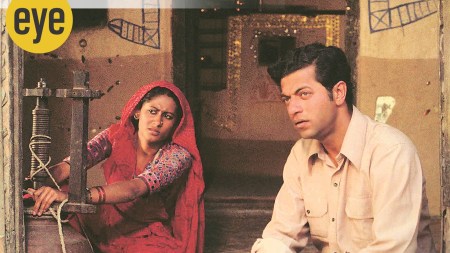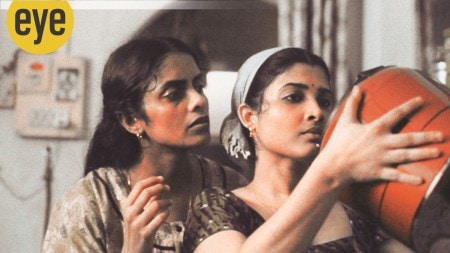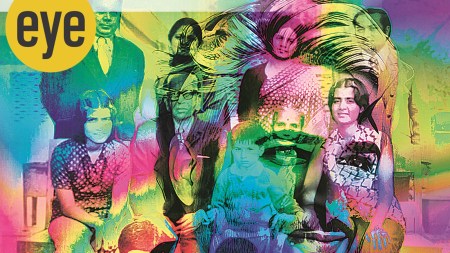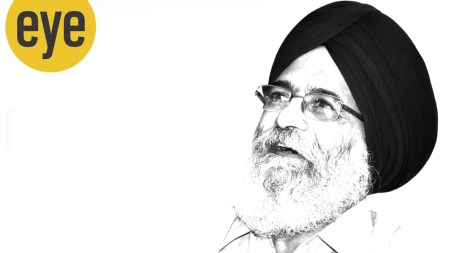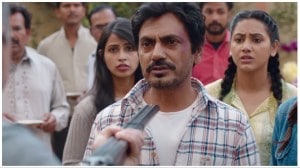- India
- International
Moner Manush
The narrative moves between the past and the present till it reaches an open ending,showing the old and doddering Lalon singing and dancing away in gay abandon.
Baul singer Lalon Phokir was born in 1774 in Harishpur,under the present district of Jhenaidah,now in Bangladesh. He ultimately settled in Seuria,a village near the present district headquarters of Kushtia. He had arguably lived to be 116,gathering disciples and is said to have composed over thousand songs of which about 600 could be traced. Though they seal themselves within their own sects and sub-sects,members of the Baul-Phokir faith across all sub-groups differ on subtle details of practice. However,they are unanimous in their acknowledgment of Lalon Phokir as the best of their best.
Lalons life story reads like an incredible film script. Goutam Ghose decided to take on the challenge along with actor Prosenjit and a dedicated cast and crew to capture the life and times of Lalon Phokir on celluloid.
The result is Moner Manush,signifying a man who,born ahead of his time,spent his life in search of his inner self and set out on an eternal,ongoing journey physical,emotional,musical and spiritual to discover the Unknown and the Supreme who defies definition,shape,form or content.
The film is structured within a dialogue between a young Jyotirindranath Tagore,(Priyangshu Chatterjee) elder brother of Rabindranath Tagore and a very old and doddering but mentally-alert Lalon (Prosenjit) in the formers luxurious bojra (royal boat) on May 5,1889,17 months before Lalon passed away. Jyotirindranath is sketching a portrait of this intriguing man who complains about his feet going to sleep after sitting in one place for too long. The narrative moves into flashback,showing a very young Lalon wandering aimlessly along the banks of the river of his village Kushtia,spinning songs and singing them,without paying heed to the needs of his wife Gulabi and his widowed mother. Legend has it that Lalon was born a Hindu and became a Muslim. When quite young,Lalon had set out on a pilgrimage with friends,but contracted small-pox. He was left for dead. A Sufi practitioner rescued him. When Lalon returned home,his mother and wife refused to take him back because he had lived with a Muslim.
The narrative moves between the past and the present till it reaches an open ending,showing the old and doddering Lalon singing and dancing away in gay abandon with Gagan,a young devotee who sings out a Rabindranath Tagore composition to his spiritual guru Lalon before the dance and the film closes on that note of infinity. Jyotirindranath is initially confused as he finds Lalons simple arguments contradictory. But gradually he is deeply influenced by the thoughts,philosophy and ideology of this semi-literate,much-maligned yet deeply venerated old man who said everything through his poetry and music. Though the film keeps on moving back and forth,it does not affect the films pace as the editing is superb.

The film spans 50 years of Lalons life. Prosenjits depiction of Lalon is quite similar to the image that we have in our mind about this great poet. Prosenjit has delivered a performance of a lifetime that he will find difficult to make in future. Priyangshu is dignified and regal as Jyotirindranath while the supporting cast is no less considering the dedication each character demanded. Special mention must be made of Shantilal Mukherjee in a brief cameo and the Bangladeshi veteran who played Lalons mentor and guru. Samir Chanda might win yet another National Award for his superlative production design in recreating an entire akhaara in Bangladesh without a single frame of reference to fall back. Anup Mukherjee and Anirban Senguptas sound design sets a model lesson in how ambient sound can enrich the texture of a film in terms of narrative and aesthetics.
Latif Shah and Khuda Baksh have rendered the playback for Lalon beautifully. The same applies to Farida Parveen,the famous Bangladeshi singer,who lent her voice to the single dance number lip-synched on screen by Paoli Dam. There are no notations for Lalons songs. So Ghosh tried to get the songs from the present Baul masters at Kushtia,Lalons place of birth.
Moner Manush touches us in a way few films in the recent past have been able to do. The painstaking research that has gone into its making is evident in every frame and camera angle,whether it pans across the river Padma in its leisurely pace,drawing parallels with the ebb and tide in the flow of the life of Lalon,or a long shot showing Lalon and his group rowing down the river on a boat,singing a song. The river is like a metaphor for Lalons unending journey. Gautam Ghoses cinematography is like a series of unbroken watercolour paintings in motion,enriching the narrative without overshadowing his directorial command and yet making its own statement.
Ratings: *****
The stars are for direction and acting,music,cinematography and production design.
May 19: Latest News
- 01
- 02
- 03
- 04
- 05


